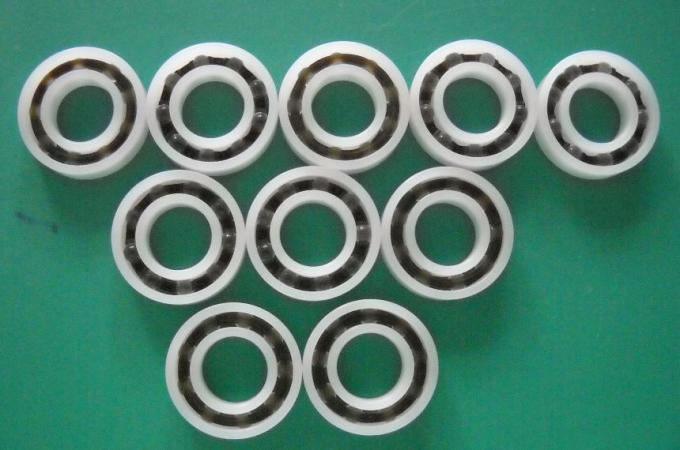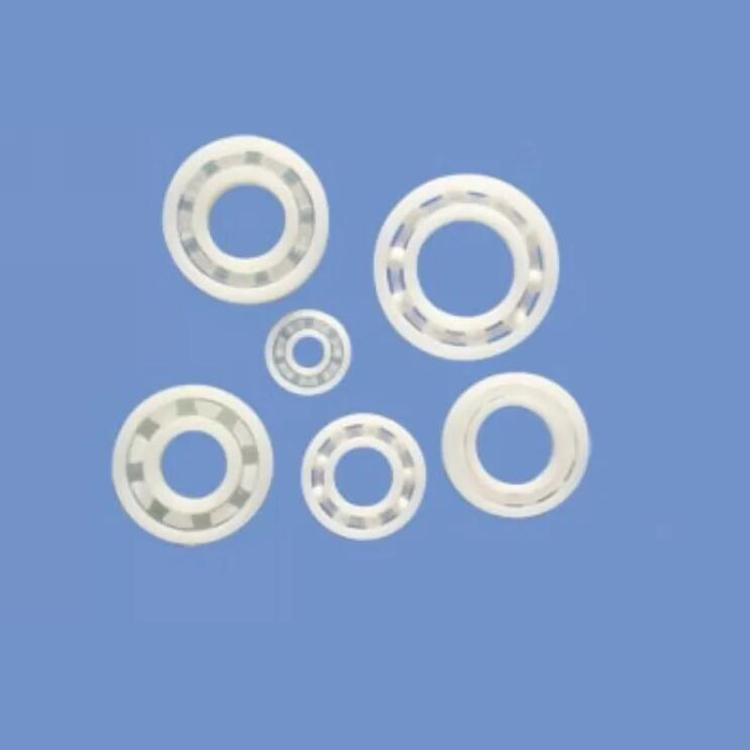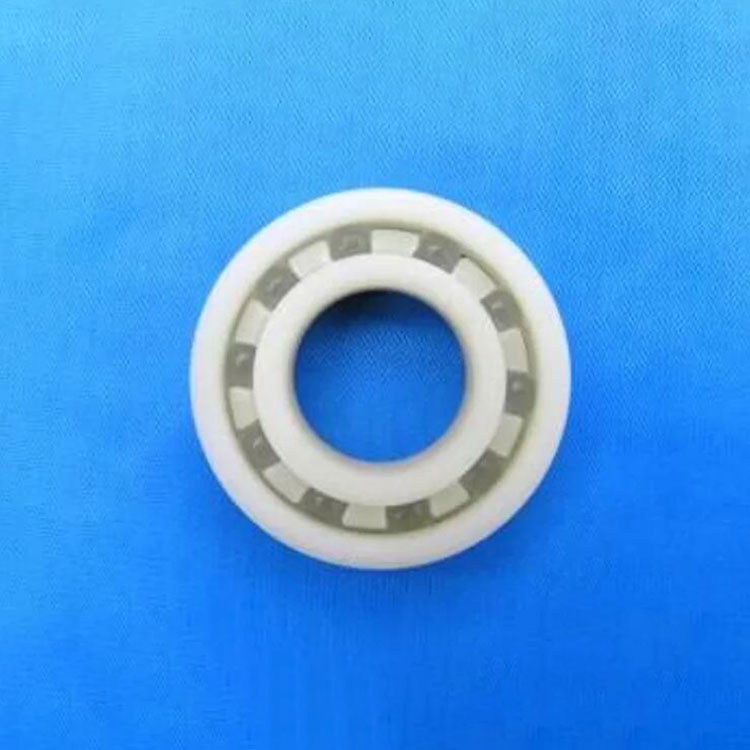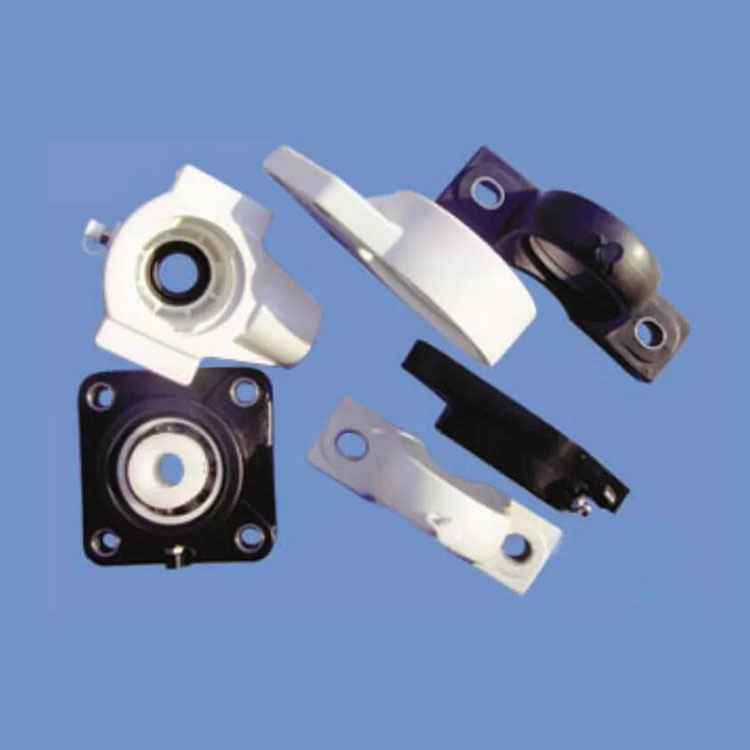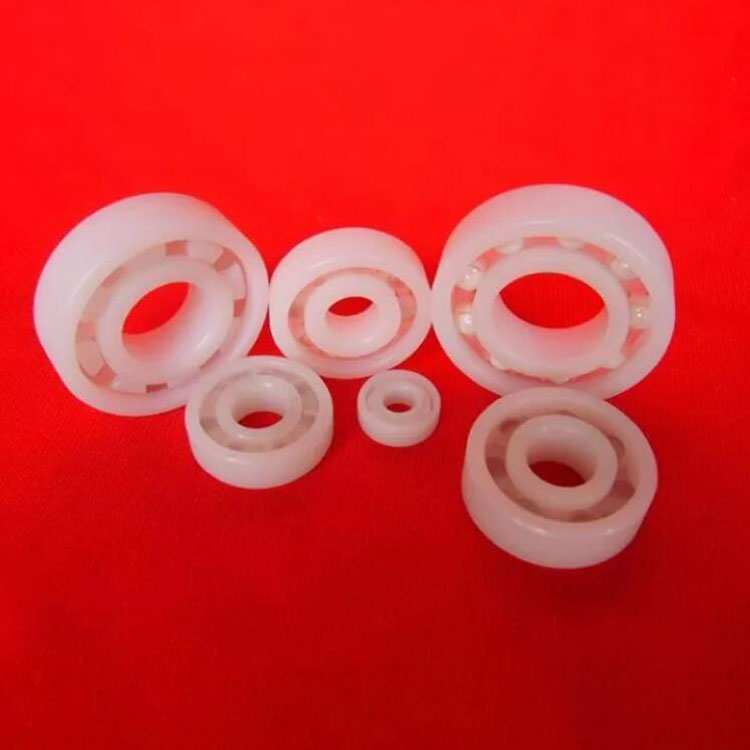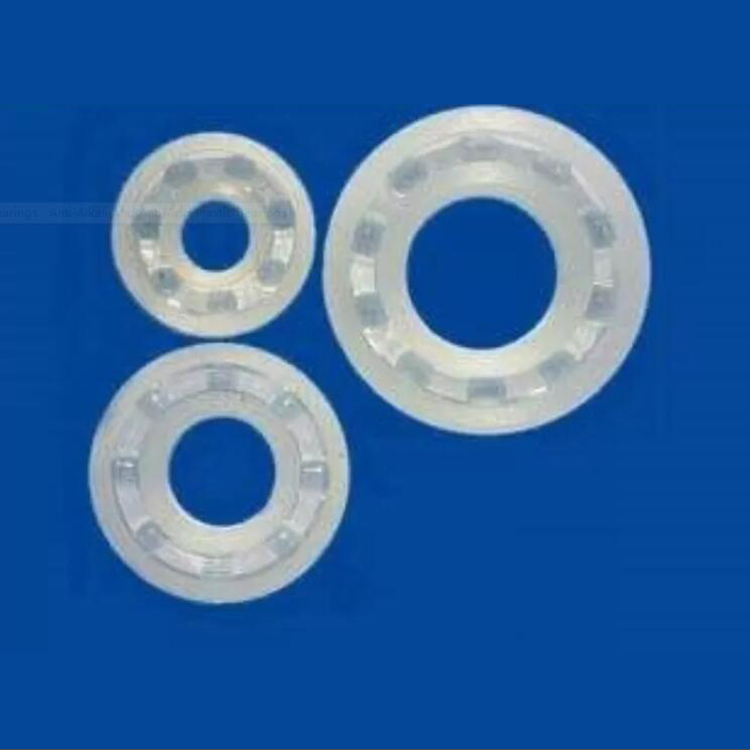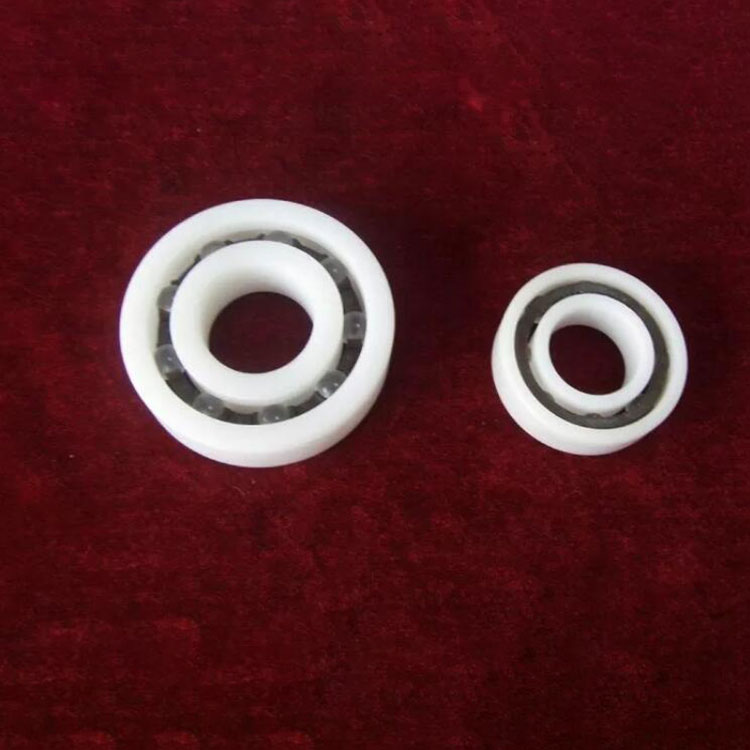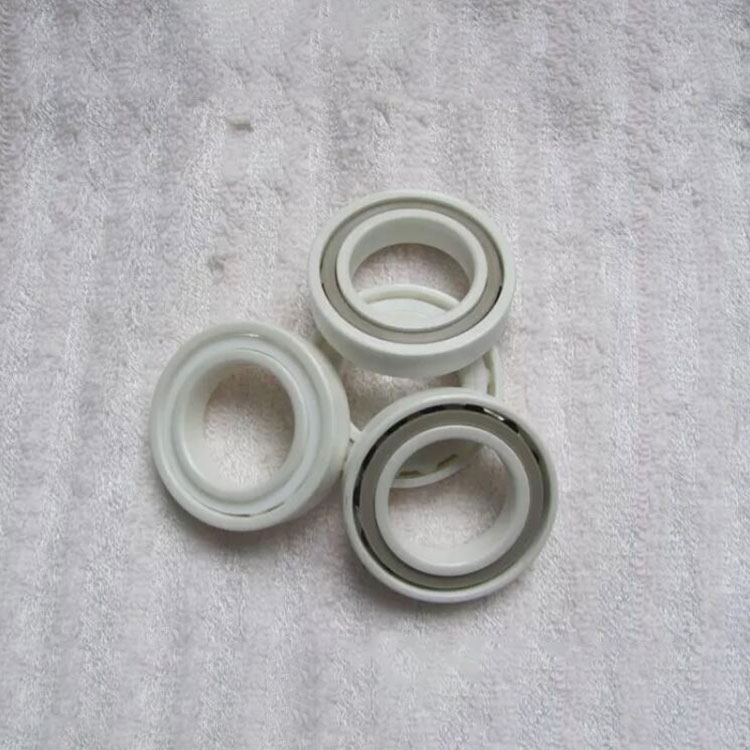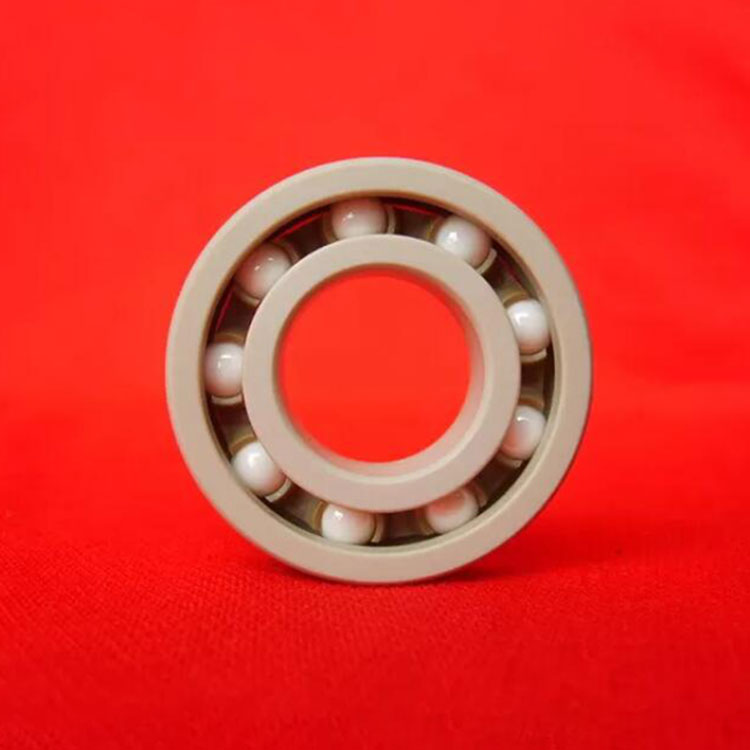UPE Plastic Bearings With Glass Stainless Or Ceramic Balls
Send Inquiry
Top Bearings is a professional China UPE Plastic Bearings With Glass Stainless Or Ceramic Balls manufacturers and suppliers, if you are looking for the best UPE Plastic Bearings With Glass Stainless Or Ceramic Balls with low price, consult us now!
Among these 3 material HDPE, PP and UPE, UPE have more excellent strength and low friction and could be used to lower temperature (lowest to -150℃).UPE plastic bearings could be used for long-time working temperature on 110C, The ball indentation hardness is 170HRC, the tensile stress is 70.
HDPE,PP,UPE(UHMWPE) are approved can be used in faintish acid and alkali environment (30% CuCl2 solution and 30% NAOH solution is tested ok). Generally the rings and cage were made with HDP PP or UPE, balls were made with glass stainless or ceramic.
Such bearings can be operated in liquid and contamination sensitive environments as acid/alkali/salt/solvent/oil/gas/seawater, and have general performance of lubrication and maintenance free, none magnetism, anti-rust and eroded of plastic bearings. But UPE plastic bearings have not strong mechanical strength, and easy to be out of shape, so couldn't be used in heavy load and high-speed application.
|
Material: |
UPE Plastic Material |
Basic Properties: |
Anti-Acid And Anti-Alkali |
|
Faintish Acid & Alkali Environment: |
30% CuCl2 Solution And 30% NAOH Solution |
Lower Temperature: |
UPE Could Be Used To Lower Temperature (lowest To -150℃) |
|
The Material Of The Rings & Cage: |
HDP PP Or UPE |
The Material Of Balls: |
Glass Stainless Or Ceramic |
|
High Light: |
plastic ball bearings, peek ball bearings |
||
Basic properties of staple engineer plastic
| Material | HDPE | PP | POM | PA66 | PVDF | PPS | PTFE | PEEK |
| Long-time working temp. | 90 | 100 | 110 | 100 | 150 | 230 | 260 | 280 |
| Density | g/cm3 | 0.91 | 1.42 | 1.14 | 1.77 | 1.35 | 2.18 | 1.32 |
| Ball indentation hardness | 50 | 80 | 170 | 170 | 80 | 190 | 30 | |
| Tensile stress | 25 | 30 | 70 | 80 | 50 | 75 | 25 | 95 |
| Sliding friction coefficient | 0.29 | 0.3 | 0.34 | 0.35-0.42 | 0.3 | 0.08-0.1 | 0.3-0.38 | |
| Melted temperature | 130 | 165 | 175 | 260 | 172 | 280 | 327 | 343 |
| Short-time highest application temperature | 90 | 140 | 150 | 170 | 150 | 260 | 260 | 300 |
| Coet of Inear expansion (10^-5/K) | 13-15 | 17 | 10 | 8 | 13 | 5 | 12 | 5 |
| Dielectric constant at 1 Mhz(10^6HZ) | 2.4 | 2.25 | 3.7 | 3.6-5 | 8 | 2.1 | 3.2-3.3 | |
| Volume resisrivity (Ω·cm) | >10^15 | >10^24 | >10^14 | 10^13 | 10^12 | >10^13 | 10^14 | 10^13 |
| flammability UL94 | + | + | - | (+) | (+) | - | + | + |
| Anti-weathering | - | - | - | - | - | - | + | - |
| Note: + =resistant; (+) =partly resistant; - =non-resistant | ||||||||
Chemical properties of Engineer plastic
| Chemical Composition | Material | ||||||||
| PI | PEEK | PTFE | PVDF | PA66 | POM | PP | HDPE | ABS | |
| Acrtate | + | + | + | (+) | (+) | + | + | (+) | + |
| Formic acid (10% water) | + | + | + | + | - | - | + | + | + |
| Ammonia (10% water) | - | + | + | + | + | (+) | + | + | + |
| Aether | + | + | + | + | + | + | + | ||
| Petrol | + | + | + | + | + | + | (+) | (+) | (+) |
| Bori acid (10% water) | + | + | (+) | + | + | + | + | + | |
| Aminoform | + | + | + | - | - | (+) | - | - | |
| Aeti aid 100% | (+) | - | + | - | - | + | + | - | |
| Aceti aid (10% water) | + | + | + | - | (+) | + | + | + | |
| HF | + | - | - | + | + | (+) | |||
| Formaldehyde aqu (30% water) | + | + | + | + | - | + | + | + | |
| Glycerin | + | + | + | + | + | + | + | ||
| Iodine, Glycol | + | + | (+) | - | (+) | + | + | (+) | |
| K2Cr2O7 (10% water) | + | + | + | - | + | + | + | ||
| KMnO4 (1% water) | + | + | + | + | - | (+) | + | + | (+) |
| 2-Hydronyprpionic 10% | + | + | + | - | - | + | + | - | |
| 2-Hydronyprpionic 90% | + | + | + | + | + | (+) | + | + | + |
| Nad (10% water) | + | + | + | + | + | + | + | + | + |
| NaNO3 (10% water) | + | + | + | + | + | + | + | + | |
| NaOH (50% water) | + | + | + | + | - | + | + | + | |
| NaOH (5% water) | + | + | + | - | + | + | |||
| Oxalic (10% water) | + | + | + | + | (+) | (+) | + | + | + |
| Tetracarp | + | + | + | (+) | + | - | - | (+) | |
| H3PO3 100% | + | + | - | + | + | ||||
| H3PO4 (10% water) | + | + | + | - | - | + | + | ||
| NHO3 (2% water) | + | + | + | + | - | - | + | + | + |
| HCL (2% water) | + | + | + | (+) | - | - | + | + | + |
| H2SO4 98% | - | + | - | - | + | (+) | - | ||
| Soap liquid | + | + | + | + | + | + | |||
| Alkaliliquid (10% water) | + | + | + | + | + | + | + | ||
| Toluene | + | + | + | + | + | + | + | (+) | - |
| Water, cold | + | + | + | + | + | + | + | + | + |
| Water, hot | + | + | + | (+) | - | + | + | + | |
| H2O2 (30% water) | (+) | + | + | - | - | + | + | + | |
| H2O2 (0.5% water) | + | + | + | - | (+) | + | + | + | |
| Asphalt | + | + | (+) | + | (+) | (+) | |||
| Note: + =resistant; (+) =partly resistant; - =non-resistant | |||||||||
